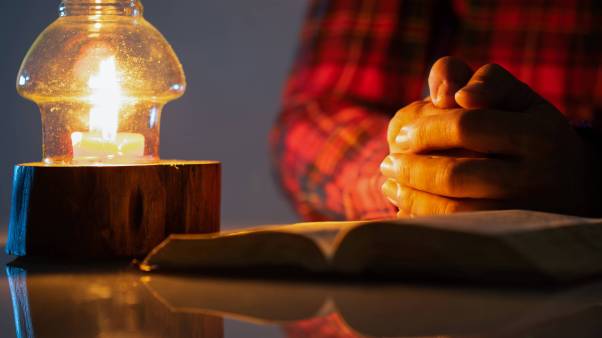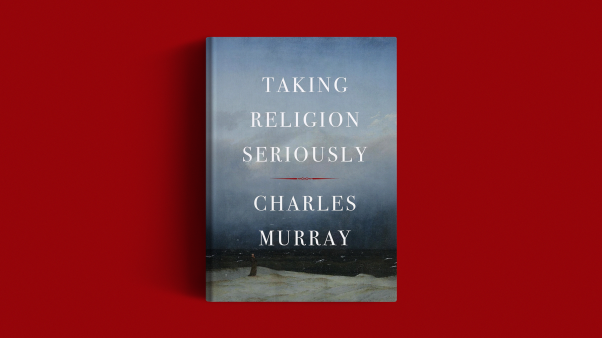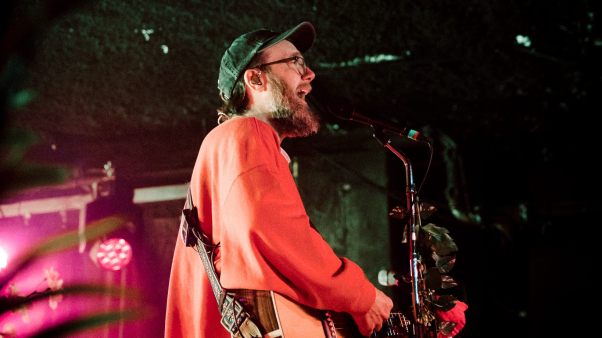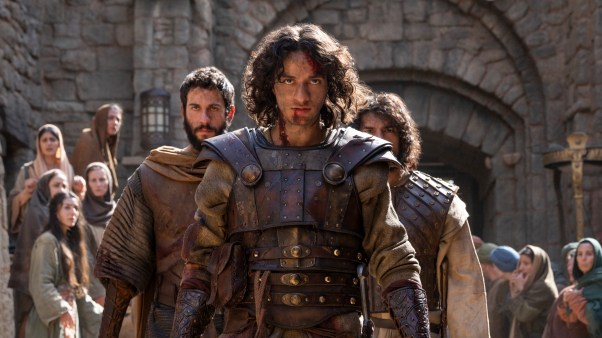At the Brownsville Assembly of God, site of a 21-month-long “Pensacola Outpouring” revival, the million-plus visits since 1995 have moved this Florida congregation to the cutting edge of evangelistic outreach.
Some worshipers arrive as early as 4 a.m. to guarantee a seat for an evening service. Some do not leave until after 3 a.m., following hours of prayer and spiritual manifestations such as jerking, moaning, and weeping.
Preceded by two years of intensive community prayer, the revival continues four nights a week in Pensacola, a Gulf Coast city of nearly 300,000 people, where religious fervor not so long ago had been a euphemism for the killing of abortionist John Bayard Britton by Paul J. Hill (CT, Sept. 12, 1994, p. 56).
“This revival has been the most remarkable, life-changing thing in my life,” says the excited but exhausted pastor, John Kilpatrick, 46. He has been pastor of the once-staid congregation in the Brownsville section of Pensacola for 15 years. But since June 1995, Kilpatrick’s life and his congregation have been turned topsy-turvy. His approach has been submissive and accepting. As he said during a recent service, “Holy Spirit, we don’t know what you’re doing, but please come.”
THE TORONTO CONNECTION: Some critics have compared this to Toronto’s controversial “laughing revival” (CT, Sept. 11, 1995, p. 23). Indeed, hundreds of people are at times sprawled seemingly unconscious on the church’s carpeted floor.
Although some of this revival’s principal players have passed through the Toronto Airport Christian Fellowship, Pensacola is a much more sober affair. Instead of Toronto’s giddiness and proclivity for unusual signs, the mood at Brownsville Assembly is somber, even penitential. There is more emphasis on forgiveness than filling, more sermons on repentance than rejoicing.
Brownsville worshipers are discouraged from being highly emotional or demonstrative. In some cases, Kilpatrick pleads from the pulpit for worshipers to remain calm, as he did at a recent service, saying, “No one draw attention to yourself. Nobody fracture this holy moment.” In other cases, ushers escort the overly exuberant out of the sanctuary.
Kilpatrick says no one judges what is happening to worshipers, because it is difficult to distinguish between a genuine touch of God and fleshly, even potentially demonic, actions. In most cases, he believes extravagant displays are the result of God’s Spirit touching lost, hurting people, whom he describes as “the walking wounded.”
“During revival, the Holy Spirit draws a lot of people in here who never had anybody love them,” Kilpatrick says. “When they feel love for the first time, they don’t know how to act.”
IN THE MAINSTREAM: There also is an emphasis on evangelism. Of an estimated 200,000 who have come to Brownsville’s huge stagelike altar for prayer, 86,000 are new converts or repentant backsliders, such as 38-year-old Teresa Finch.
“I hadn’t been in a church in 20 years,” says Finch, who explains a deliverance from dependence on marijuana at a September 1995 service. “You could feel the presence of the Lord all over the place.”
Vinson Synan, a historian of Pentecostal and charismatic movements, and dean at Regent University School of Divinity in Virginia Beach, Virginia, says characteristics of the Brownsville revival put it in the mainstream of American religious history.
“Brownsville, with its emphasis on conversion and people weeping over conviction of sin, seems to be a revival in the long tradition of American native revivals dating back to the preaching of Jonathan Edwards,” Synan says. “There’s a lot of heavy preaching on sin, repentance, conversion, and holiness. And there’s a lot more weeping and wailing over sin than there are the so-called exotic manifestations.”
The Pensacola revival has inspired renewal in other congregations, including in the 2.5 million-member Assemblies of God, which traces its Pentecostal roots to 1914. The Assemblies of God has embraced the revival at Brownsville.
“We are very comfortable with what’s happening there,” says Charles Crabtree, assistant general superintendent of the Assemblies of God. “They have maintained doctrinal purity throughout. They allow a freedom of the Spirit, but at the same time, there’s a point where they deal with excesses.”
LAYING THE GROUNDWORK: The first expectations of revival in Pensacola came four years ago. David Yonggi Cho, pastor of one of the world’s largest churches, located in Seoul, South Korea, says during prayer for revival in America God prompted him to look at a U.S. map. And he placed a finger on Pensacola.
“I sensed the Lord say, ‘I am going to send revival to the seaside city of Pensacola, and it will spread like a fire until all of America has been consumed by it,’ ” Cho wrote in the foreword to Feast of Fire, Kilpatrick’s 1995 self-published book.
Kilpatrick and his congregation also began praying for revival in May 1993. Their petitions came to fruition on Father’s Day in 1995, when evangelist Steve Hill, who had been supported by the church while in Argentina and Russia, preached at the church. Nearly a thousand people—roughly half the congregation—came forward when Hill issued an altar call. Soon many of them fell to the floor, including Kilpatrick, who remained on his back for more than three hours.
People have been falling, crying, weeping, and dancing at Brownsville ever since, with Kilpatrick preaching at Sunday morning services and Hill preaching the revival meetings, held Wednesday through Saturday evenings.
The revival meetings usually begin with praise and worship, with choruses sung with a spiritual fervor and emotional intensity. Sometimes worship continues for hours. Most nights, the 49-year-old Hill delivers a compelling evangelistic message in a warm and relational style. “There’s hope for everyone in this room,” he says, pacing, puffing, and dabbing his sweating brow with a handkerchief. Often, hundreds of people come forward for salvation or prayer.
Hill admits to being a former drug abuser and petty thief who underwent a dramatic conversion to Christ at age 28. He subsequently studied under the late revivalist Leonard Ravenhill.
Of the Pensacola experience, Hill comments, “For years, God has been tired of being misrepresented, and revival is God representing himself.” Kilpatrick and Hill are a dynamic but low-key duo who exhibit an uncommon level of mutual affection and submission.
A GROWING IMPACT: Brownsville’s joyous worship services have been captured on a series of compact discs, including Vineyard Music’s Winds of Worship: Live from Brownsville and Hosanna! Music’s Revival at Brownsville.
The church also offers books, audio- and videotapes, and a series of manuals covering everything from pointers for ushers to guidance for intercessory prayer.
In addition, nearly 5,000 pastors have attended three pastors’ conferences. Next month’s conference has been sold out since last year. Many local hotels and restaurants offer a Brownsville discount.
As word about the revival has spread, the Brownsville Assembly has doubled its staff and phone lines. A new sanctuary is planned later this year, and a new ministry school opened in January.
Meanwhile, long-time church members have found it increasingly difficult to squeeze into their own building. In January 1996, the church began issuing tickets to members, who are seated first. But some members, saddened at the sight of foreign visitors being unable to get in, now attend less frequently.
Contrary to a widely circulating rumor, crime rates in Pensacola have not decreased dramatically. “The crime rate has dropped down some. At one time, there was an 11-month stretch without a homicide,” says assistant police chief Jerry Potts. “Whether or not that can be attributed to what’s going on at Brownsville, we can’t say.”
THE PROOF OF REVIVAL: The revival also has drawn thousands of young people to Christ, such as Shawn Kidd. Last October, the 20-year-old Kidd was in Biloxi, Mississippi, considering suicide, when two men who had attended the Brownsville revival approached him and began talking about Jesus. Kidd, who had been involved in Satanism since age 13, accepted their invitation to attend services, where he made quite a stir with his Mohawk haircut and “666” tattoos on his forehead and hand.
Kidd came forward, accepted Jesus as Savior, and underwent an exorcism. “I felt like little black clouds were coming out of me,” he says, describing the demons departing.
Today, the Mohawk and tattoos are gone. And Kidd has relocated along with other young people who made commitments to enter full-time Christian service and attend January’s inaugural classes at the new Brownsville Revival School of Ministry. The school has an enrollment of 120 full-time students.
“The proof of revival is in the living,” says school dean Michael L. Brown, an author of several books on revival. “Couples with children are selling their homes and their businesses to move here and study and spread the harvest.”
Meanwhile, visitors continue to flock to the revival services at Brownsville Assembly of God.
Rich Friedman, a physician who came to Pensacola from Phoenix, is glad they made room for him. A Christian for 23 of his 39 years, Friedman says he came to Brownsville “because there’s a deep hunger in my heart for more of God.”
Friedman spent more than an hour lying on the church floor with his eyes closed and his hand moving rhythmically near his mouth. Afterwards he really did not know what had happened to him.
“I find that I’m not fully aware of what the Lord has done until some time after,” he says, echoing the sentiments of many who are watching the Pensacola outpouring with a combination of hope and anticipation.
Copyright © 1997 Christianity Today. Click for reprint information.










